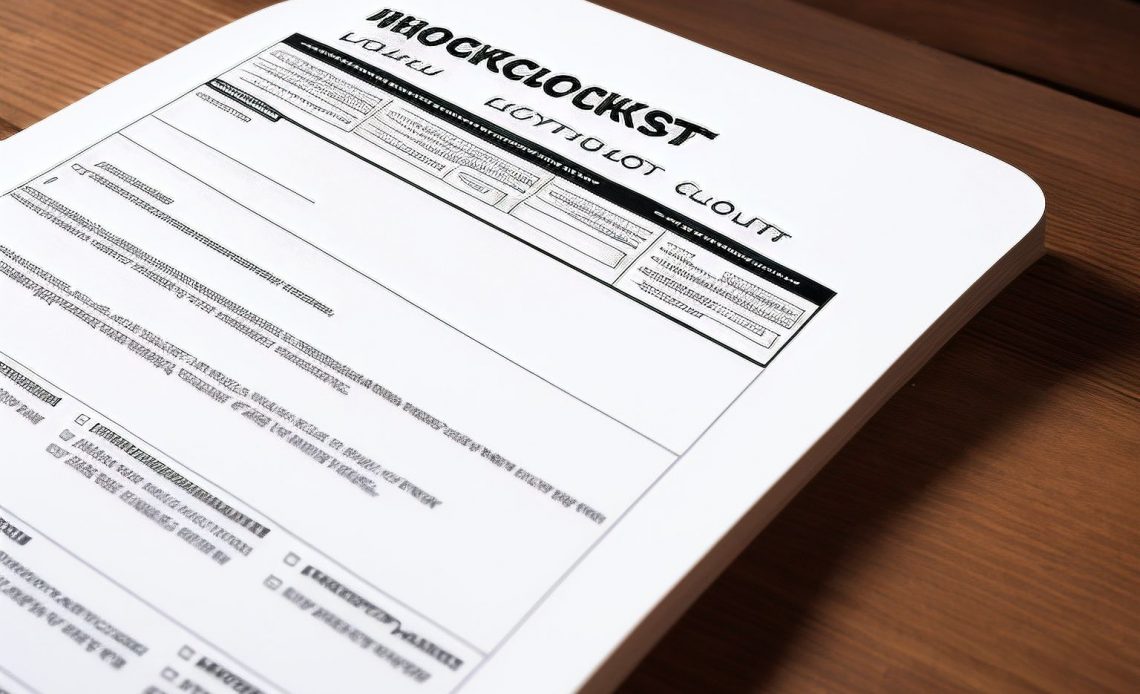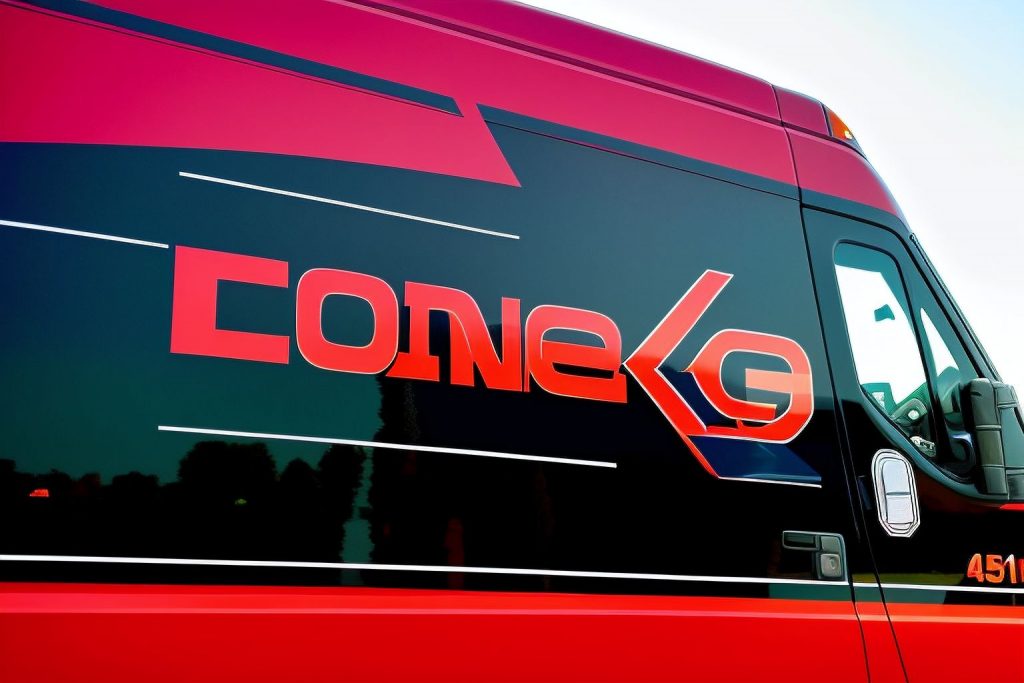
This article provides a comprehensive checklist to ensure a smooth and successful long distance move. Moving to a new location can be a daunting task, but with proper planning and organization, it can be a stress-free experience. Whether you’re moving across the country or to a different state, following this checklist will help you stay organized and ensure a successful relocation.
First, start by planning and preparing for your move. Create a budget and timeline to keep track of your expenses and deadlines. Research moving companies and obtain necessary documents such as moving permits or visas if required. This will help you stay on track and avoid any last-minute surprises.
Next, focus on packing and organization. Gather packing supplies such as boxes, tape, and bubble wrap. Label each box with its contents and the room it belongs to. This will make unpacking much easier and help you find specific items when needed. Don’t forget to protect fragile items by wrapping them carefully and using padding material.
When it comes to hiring movers, make sure to choose a reliable moving company. Check their licenses and insurance to ensure they are legitimate and trustworthy. Read reviews and get estimates from different companies to compare prices and services. This will give you peace of mind knowing that your belongings are in good hands during the move.
Creating a detailed inventory of your belongings is also crucial. Categorize items and document their condition before the move. This will help you keep track of everything and ensure nothing gets lost or damaged during transportation. Consider taking pictures of valuable items as additional documentation.
Understanding moving insurance options is essential for protecting your belongings. Familiarize yourself with different types of coverage and choose the one that suits your needs. Valuation coverage and additional insurance options can provide extra peace of mind. Be aware of the steps to file a claim in case any damage occurs during the move.
Before leaving your current home, make sure to prepare it for the move. Notify utility companies to disconnect services and forward your mail to the new address. Clean and organize your home to leave it in good condition for the next occupants. This will ensure a smooth transition and prevent any issues with your old residence.
Finally, once you arrive at your new home, focus on settling in. Unpack and organize your belongings, starting with essential items. Set up utilities and update your address with relevant institutions such as banks, government agencies, and subscriptions. Take the time to explore your new neighborhood and familiarize yourself with local amenities and transportation options.
In conclusion, following this ultimate checklist will help you have a successful long distance move. From planning and packing to hiring movers and settling into your new home, each step is crucial for a stress-free relocation. Remember to stay organized, communicate with your moving company, and take the time to familiarize yourself with your new surroundings. Good luck with your move!
Planning and Preparation

Moving over long distances can be a daunting task. To ensure a smooth transition, consider enlisting the services of a “white glove moving service.” Here’s a brief checklist to help make your long-distance move a success:
- Plan Ahead: Set your moving date well in advance, allowing time for preparations and arrangements.
- Choose a Professional Mover: Opt for a reputable “white glove moving service” to handle your belongings with the utmost care and attention.
- Declutter: Sort through your belongings and decide what to keep, donate, or sell. Reducing your load can save time and money during the move.
- Gather Packing Supplies: Acquire all necessary packing materials, including boxes, bubble wrap, tape, and labels.
- Create an Inventory: Keep an itemized list of your possessions to stay organized and prevent any items from going missing.
- Update Your Address: Notify important parties of your change of address, such as utility companies, the post office, and any subscriptions.
- Efficient Packing: Begin packing early and tackle one room at a time, starting with items you won’t need immediately.
- Secure Valuables: Safeguard your valuable items separately and consider transporting them personally for added security.
With this checklist and the assistance of a “white glove moving service,” your long-distance move can be a hassle-free experience.
Packing and Organization
When it comes to a long distance move, efficient packing and organization are key to a successful and stress-free relocation. By following these tips and techniques, you can streamline the packing process and ensure that your belongings arrive safely at your new home.
First and foremost, it is important to gather all the necessary packing supplies. This includes sturdy boxes in various sizes, packing tape, bubble wrap, packing paper, and markers for labeling. Having the right materials on hand will make the packing process much smoother.
Labeling your boxes is crucial for easy identification and unpacking. Clearly mark each box with its contents and the room it belongs to. This will save you time and effort when it comes to unpacking in your new home.
When packing fragile items, take extra care to protect them. Use bubble wrap or packing paper to wrap delicate items individually, and place them in boxes with plenty of cushioning material. You can also consider using special packing techniques, such as double boxing or creating custom dividers, to provide additional protection.
By following these packing and organization strategies, you can ensure that your belongings are packed securely and arrive safely at your new home. With a well-organized packing process, you can focus on settling into your new surroundings and starting the next chapter of your life.
Choosing a Reliable Moving Company
When it comes to a long distance move, choosing a reliable moving company is crucial for a successful and stress-free relocation. But with so many options out there, how do you make the right choice? Here are some key factors to consider:
- Check licenses and insurance: Ensure that the moving company you choose is properly licensed and insured. This will give you peace of mind knowing that your belongings are protected throughout the moving process.
- Read reviews: Take the time to read reviews and testimonials from previous customers. This will give you an insight into the quality of service provided by the moving company and help you make an informed decision.
- Get estimates: It’s important to get estimates from multiple moving companies to compare prices and services. This will help you find the best value for your money and avoid any hidden costs.
By considering these key factors, you can choose a reliable moving company that will handle your long distance move with professionalism and care. Remember, a reputable moving company like Dreiske Moving Company will ensure a smooth and hassle-free relocation.
Creating a Moving Inventory
When it comes to a long distance move, creating a detailed inventory of your belongings is crucial. This not only helps you stay organized, but also ensures that nothing gets lost during the transportation process. So, how do you go about creating a moving inventory?
Firstly, it’s important to categorize your items. This can be done by room or by type of item. By categorizing your belongings, you’ll have a clear idea of what needs to be packed and how to keep track of everything.
Next, document the condition of your items. This is especially important for fragile or valuable items. Take pictures or make notes of any existing damage to ensure that you have evidence in case of any mishaps during the move.
Lastly, keep track of everything during the transportation process. You can use a spreadsheet or a moving inventory app to list all your items and their corresponding boxes. This will make it easier to unpack and ensure that nothing is left behind.
By creating a moving inventory, you’ll have peace of mind knowing that your belongings are accounted for and that nothing gets lost along the way.
Understanding Moving Insurance Options
When planning a long distance move, it is crucial to understand the different types of moving insurance available and how they can protect your belongings during transit. Moving insurance provides coverage for any damage or loss that may occur to your items while they are being transported to your new home. By familiarizing yourself with the various insurance options, you can ensure that your belongings are adequately protected throughout the moving process.
One type of moving insurance is valuation coverage, which is typically offered by moving companies. Valuation coverage establishes the maximum liability of the moving company in the event of loss or damage to your belongings. It is important to carefully review the terms and conditions of the valuation coverage offered by your chosen moving company to determine the level of protection it provides.
In addition to valuation coverage, there are additional insurance options that you can consider to further protect your belongings. These options may include full value protection, which provides coverage for the full replacement value of your items, and third-party insurance, which allows you to purchase insurance from a separate provider. Before selecting additional insurance options, it is recommended to compare the coverage and costs offered by different providers to make an informed decision.
In the unfortunate event that damage or loss occurs during the move, it is important to know the steps to file a claim. This typically involves documenting the damage or loss, providing supporting evidence such as photographs or receipts, and submitting a claim to the moving company or insurance provider. By understanding the process of filing a claim, you can ensure a smooth resolution and the appropriate compensation for any damages.
Preparing Your Current Home
Before you embark on your long distance move, it’s important to take the necessary steps to prepare your current home. By following these tips, you can ensure that your old residence is left in good condition and make the transition smoother.
- Notify utility companies: Contact your utility providers to inform them about your move. Schedule the disconnection of services, such as electricity, gas, water, and internet, for the appropriate date. This will prevent any unnecessary charges and ensure a seamless transition.
- Forward mail: Don’t forget to update your mailing address with the post office. Fill out a change of address form or set up mail forwarding to ensure that your mail reaches you at your new location.
- Clean and organize: Before you leave, thoroughly clean your current home. This includes cleaning appliances, floors, and bathrooms. Additionally, declutter and organize your belongings to make the packing process easier and leave a fresh start for the next occupants.
- Secure valuable items: Take precautions to protect your valuable possessions. Consider storing important documents, jewelry, and other valuable items in a safe deposit box or a secure location to give you peace of mind during the move.
- Take care of repairs: If there are any repairs or maintenance tasks that need to be addressed, make sure to take care of them before you move out. This will help you avoid any potential disputes or deductions from your security deposit.
By following these tips, you can leave your current home in good condition and ensure a smooth transition to your new place. Remember, proper preparation and organization are key to a successful long distance move.
Settling into Your New Home
Settling into your new home can be an exciting and overwhelming experience. After a long distance move, there are several important tasks to complete to ensure a smooth transition. The first step is unpacking and organizing your belongings. Start by unpacking essential items such as bedding, toiletries, and kitchen essentials, and gradually work your way through the rest of your boxes.
As you unpack, take the time to organize your belongings in a way that makes sense to you. Consider using storage solutions such as bins, shelves, and drawers to maximize space and keep things tidy. This will help you feel more settled and make it easier to find what you need.
In addition to unpacking, setting up utilities is another crucial task. Contact the necessary service providers to ensure that electricity, water, and internet are up and running. This will help you feel comfortable and connected in your new home.
Lastly, don’t forget to update your address with important organizations and individuals. Notify your bank, employer, and any other relevant parties of your new address. Additionally, update your driver’s license, voter registration, and any other legal documents as needed.
By completing these important tasks, you can settle into your new home quickly and comfortably. Take the time to make your new space feel like home and enjoy the exciting journey of starting fresh in a new place.
Exploring Your New Neighborhood
When you move to a new neighborhood, it’s important to take the time to familiarize yourself with your surroundings and community. By doing so, you can make a smooth transition and quickly feel at home in your new environment. Here are some tips to help you explore your new neighborhood:
- Research Local Amenities: Find out about the amenities available in your new neighborhood, such as grocery stores, restaurants, parks, and recreational facilities. Knowing where these essential services are located will make it easier for you to settle in.
- Discover Schools: If you have children, researching the local schools is crucial. Look into the quality of education, extracurricular activities, and proximity to your new home. This will help you make informed decisions about your children’s education.
- Explore Healthcare Facilities: Familiarize yourself with the healthcare options in your new neighborhood. Locate nearby hospitals, clinics, and pharmacies, and find out if they meet your healthcare needs.
- Transportation Options: Understand the transportation options available in your new area. Research public transportation routes, bike lanes, and major roadways. This will help you plan your daily commute and navigate the neighborhood efficiently.
By taking the time to explore your new neighborhood, you can quickly adapt to your new surroundings and feel more at ease in your new community. Remember, getting to know your neighbors and engaging in local moving service can also help you build connections and create a sense of belonging.
Updating Your Legal and Personal Information
Ensure a seamless transition by updating your legal and personal information after the move. It is important to take care of these tasks promptly to avoid any potential issues. Here are the necessary steps to update your information:
- Change your address with government agencies such as the post office, IRS, and Social Security Administration. This ensures that your mail is forwarded to your new address and that you receive important documents and correspondence.
- Contact your financial institutions, including banks, credit card companies, and insurance providers, to update your address and contact information. This will ensure that you receive important statements and notifications.
- Update your driver’s license and vehicle registration with the Department of Motor Vehicles in your new state or country. This will ensure that your license and registration are valid and up to date.
- Update your voter registration to reflect your new address. This will ensure that you are able to participate in elections and exercise your right to vote.
By taking these steps to update your legal and personal information, you can avoid any potential complications and ensure a smooth transition to your new home.
Choosing a Reliable Moving Company
When it comes to planning a successful long distance move, one of the most important decisions you’ll make is choosing a reliable moving company. With so many options out there, it’s crucial to do your research and find a company that meets your specific needs. Here are some key factors to consider:
- Check licenses and insurance: Make sure the moving company you choose is properly licensed and insured to protect your belongings during transit. This will give you peace of mind knowing that your items are in safe hands.
- Read reviews: Take the time to read reviews and testimonials from previous customers. This will give you insight into the company’s reputation and level of customer satisfaction.
- Get estimates: Contact multiple moving companies and request estimates. This will help you compare prices and services to find the best option for your budget.
By considering these factors and doing your due diligence, you can ensure that you choose a reliable moving company that will make your long distance move a smooth and stress-free experience.
